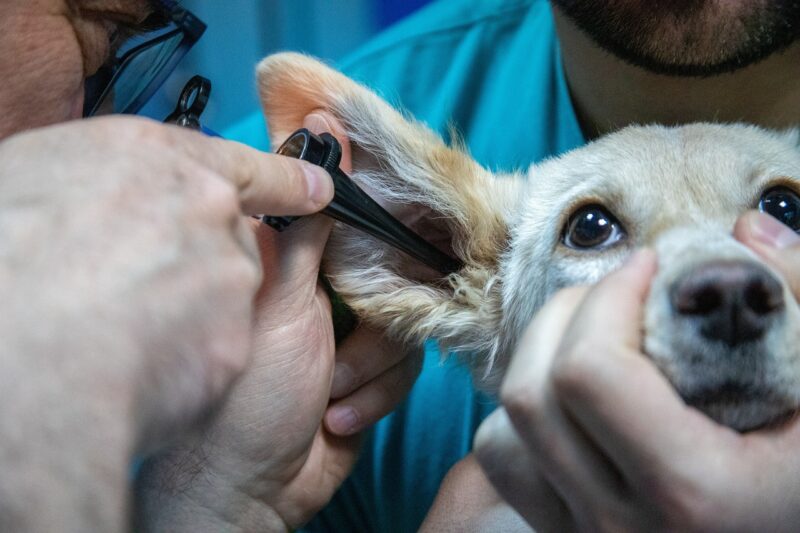How Zoos Use Modern Veterinary Science to Care for Rare and Exotic Animals
November 15, 2024

Zoos have evolved far beyond their initial conception as simple menageries showcasing animals for public amusement. Today, they serve as vital conservation centers that utilize modern veterinary science to protect and care for rare and exotic species. Veterinary science in zoos plays a pivotal role in not only ensuring the health of individual animals but also contributing to global conservation efforts. In this article, we will explore how zoos are uniquely equipped to use advanced veterinary practices to support the health and well-being of rare and exotic animal populations.
1. The Evolution of Veterinary Science in Zoos
The field of veterinary medicine has evolved significantly over the years. Initially, zoo veterinarians primarily focused on treating illnesses and injuries. However, advancements in veterinary science have introduced more comprehensive approaches that include preventative care, behavioral health assessments, and specialized treatments tailored to different species.
Modern zoos must also meet the specific needs of exotic animals, incorporating knowledge about their natural habitats and behaviors, which can vary greatly between species. This has allowed veterinarians to create customized health plans for each animal, focusing on species-specific diets, social structures, and environmental enrichments.
Staffing zoos with experienced veterinarians and animal care specialists has led to a tighter integration of veterinary science and animal husbandry, enhancing the overall quality of care.
2. Advanced Medical Techniques in Zoo Veterinary Care
Zoo veterinarians have access to a wide array of advanced medical technologies that were not previously available. These technologies include:
- Imaging Techniques: Modern imaging techniques such as ultrasound, X-rays, and CT scans allow veterinarians to assess the condition of internal organs without invasive surgery. This technology provides crucial information for diagnosing and monitoring diseases in exotic species.
- Anesthesia Protocols: Anesthesia protocols have been adapted for various species, taking into account their unique physiology and behavioral characteristics. This ensures safe procedures for animals that might be more susceptible to typical dosing regimens used on domestic pets.
- Preventative Care and Vaccination: Similar to human medicine, preventive care is emphasized in veterinary practice for zoo animals. Vaccinations are tailored to the specific risks faced by exotic species, significantly reducing the threat of zoonotic diseases.
- In-Hospital Treatments: Many zoos are equipped with state-of-the-art surgical suites, enabling complex surgeries and rapid response to medical emergencies. This capability ensures immediate care for animals in need, minimizing the stress and risk associated with transportation to outside veterinary facilities.
These state-of-the-art techniques allow zoo veterinarians to provide cutting-edge care, enhancing the overall health states of their animal populations.
3. Collaborative Conservation Efforts
Veterinary science in zoos does not exist in isolation; rather, it is deeply intertwined with conservation initiatives. Collaborative programs between zoos and wildlife conservation organizations enable the sharing of knowledge and resources, offering new opportunities for species preservation. Some critical collaborative efforts include:
- Breeding Programs: Zoos participate in breeding programs for endangered species, which can help maintain genetic diversity and restore populations in their natural habitats. Veterinarians work closely with animal care staff to assess the reproductive health of animals and develop breeding recommendations based on genetic data.
- Field Research: Many zoos fund research projects in the field, studying animal behavior, habitat needs, and health concerns. For instance, veterinary staff may accompany researchers to contribute their expertise in data collection and health evaluations, monitoring both captive and wild populations.
- Rescue and Rehabilitation: Zoos often engage in rescue efforts for animals affected by habitat destruction, poaching, and illegal trade. Their veterinary teams provide immediate medical care and rehabilitation, ensuring animals are fit for eventual reintroduction into the wild when possible.
Collaboration amplifies conservation efforts, encouraging the sharing of best practices and innovative solutions across institutions towards preserving species.
4. Behavioral Health and Enrichment
Veterinary science has expanded to encompass the mental and emotional health of zoo animals through enriched environments that promote natural behaviors. Behavioral enrichment involves:
- Environmental Enrichment: Zoos create stimulating environments by mimicking an animal’s natural habitat. This might include climbing structures for primates, water features for aquatic species, or hiding food to encourage foraging behaviors.
- Social Structures: Understanding the social dynamics of various species allows for the formation of compatible social groups that can thrive in captivity. This reduces stress and promotes healthy interactions between animals.
- Behavioral Training: Positive reinforcement training methods are often employed to teach animals voluntary behaviors for medical procedures, easing the stress of veterinary care. This empowers animals and enhances their overall well-being.
Understanding behavior is essential for improving animal welfare, and veterinarians are at the forefront of this paradigm shift in how animals are cared for in zoos.
5. Challenges and Future Directions
While much progress has been made, zoo veterinary science faces challenges that require ongoing adaptation and innovation. Some of the critical challenges include:
- Species-Specific Needs: The diverse range of species within zoos presents a challenge for veterinarians who must remain adept at understanding the unique health requirements of individual animals. This demands continuous education and research to keep up with new findings.
- Funding Limitations: Many zoos operate on tight budgets, which can impact their ability to invest in new technologies and training for veterinary staff. Establishing partnerships with organizations can help to secure necessary funding for innovative veterinary initiatives.
- Conservation Education: Educating the public about the role of zoos in conservation is essential for securing ongoing support. Zoos have a responsibility to raise awareness and advocate for endangered species beyond their gates, which requires effective communication and outreach strategies.
As the field of veterinary science continues to advance, zoos will be able to overcome these challenges and innovate solutions for the future. Integrating modern technology with traditional animal care practices will empower veterinarians and zoos to lead efforts in wildlife conservation.
Conclusion
Modern veterinary science has transformed zoos into vital centers for the care and conservation of rare and exotic animals. By utilizing advanced medical techniques, engaging in collaborative conservation efforts, and prioritizing behavioral health, veterinarians play a crucial role in protecting animal populations worldwide. As challenges persist, ongoing innovation and education will be key to ensuring zoos remain beacons of hope for conservation efforts in the years to come.
In essence, we must recognize the invaluable contributions of zoo veterinary science in conserving some of the planet’s most endangered species while unveiling the rewards of a well-rounded approach to animal care, ultimately fostering a deeper understanding of the connection between wildlife and humanity.







